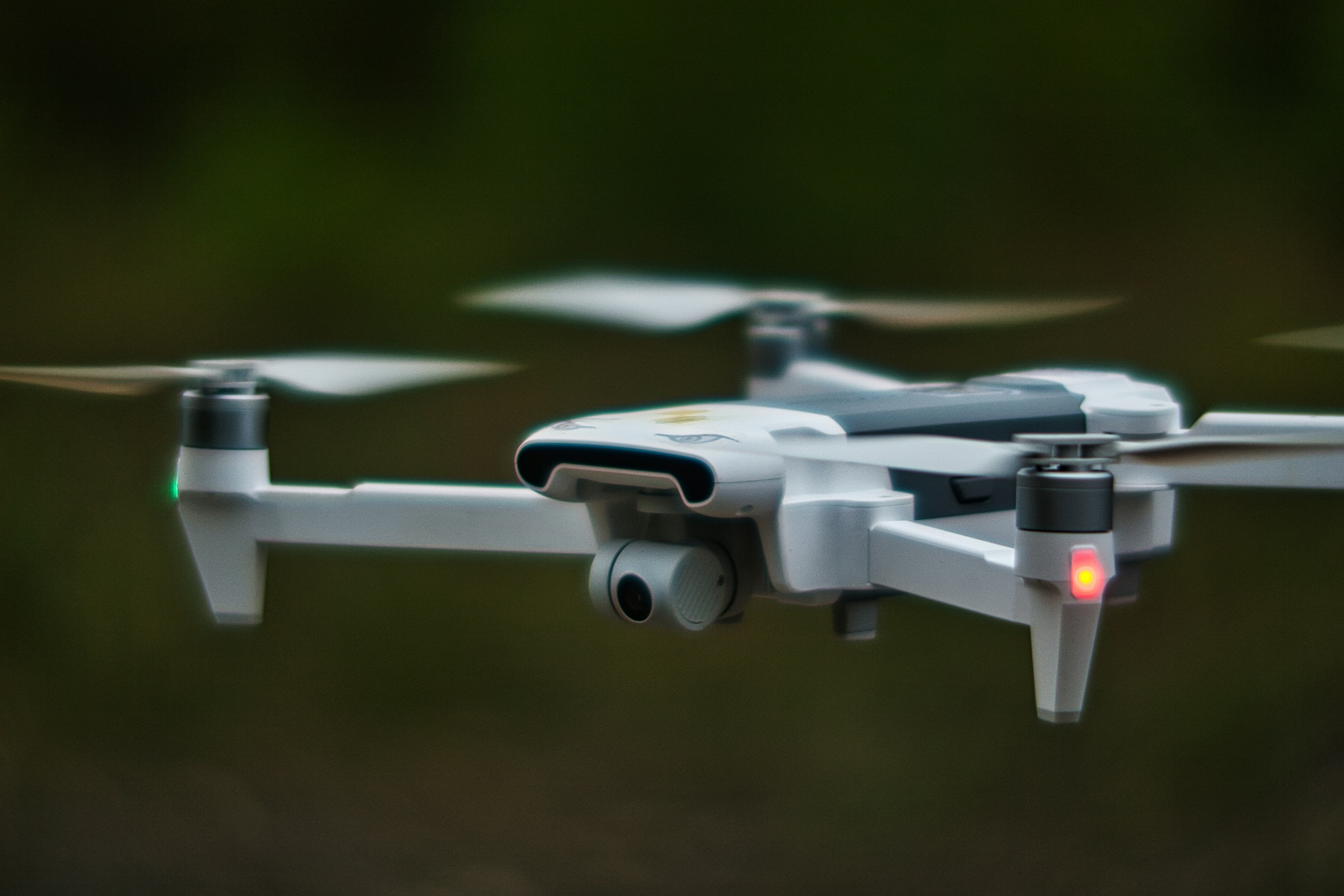
UAV & Drone Hiring Trends 2026: What to Watch Out For (For Job Seekers & Recruiters)
As we move into 2026, the UK UAV (uncrewed aerial vehicle) and drone jobs market is maturing fast. The “shiny new toy” phase is over. Public expectations and regulation are tougher, budgets are more closely scrutinised, and clients want measurable outcomes – safer inspections, faster data, lower costs, better evidence – not just impressive footage.
At the same time, demand for UAV services in infrastructure inspection, construction, energy, agriculture, emergency response, defence and media continues to grow. Long-term trends like asset digitisation, smart cities, and net-zero infrastructure all rely on high-quality aerial data and remote operations.
The result: fewer opportunistic one-off drone gigs, and more emphasis on professional UAV operations, data workflows and compliant, scalable services.
Whether you’re:
A job seeker looking for “UAV jobs in the UK”, “drone pilot jobs UK”, or “remote UAS operator roles”, or
A recruiter or hiring manager trying to understand “UAV hiring trends 2026” and “how to hire drone pilots and UAS engineers”,
…this guide breaks down what’s changing – and what to do about it.
1. A Tougher Market Overall – But UAVs Are Now Critical Infrastructure
The wider UK tech and construction/engineering jobs markets have been uneven. Some sectors are investing heavily; others are under cost pressure. Drone and UAV work sits right in the middle of that tension.
On the one hand:
Many “side-hustle” drone pilots have left the market because it’s no longer easy to win ad-hoc photography jobs.
Some start-ups have struggled to translate impressive demos into repeatable, profitable contracts.
On the other hand:
Major infrastructure owners, utility companies, local authorities and blue-light services are baking UAVs into their standard operating procedures.
Defence and security clients increasingly treat uncrewed systems as core capabilities, not experimental extras.
Construction and surveying firms are using drones to underpin digital twins, BIM models and progress monitoring.
What this means in practice:
Fewer “one-off” roles that are essentially freelance drone flying with no wider responsibility.
More permanent or long-term roles in organisations that own fleets, manage permissions, and integrate UAV data into their core systems.
Stronger competition for each professional UAV job – but also real skills shortages where operations must scale safely and compliantly.
For UAV job seekers
Expect employers to ask about repeatable results and operational discipline, not just your flying ability or cinematic reel.
On your CV, move from “I fly drones” to outcomes such as:
“Reduced inspection time on X type of asset by 60% compared with rope access, while improving defect detection rate.”
“Delivered weekly orthomosaic surveys for a £Y million construction project, feeding into BIM and progress reports.”
Be ready with short case studies that follow the pattern: operational or business problem → UAV solution → your role → measurable impact.
For recruiters and hiring managers
Tie every UAV hire to a clear outcome: safety (working at height), cost saving, schedule certainty, asset data quality, resilience or response times.
Replace generic “looking for a drone pilot” adverts with specifics: asset types, airspace environments, data outputs, client types, and key KPIs.
Expect to invest time finding candidates who understand both flying and data – and who take regulation and safety seriously.
2. From “Drone Pilot” to Full UAV Operations & Data Roles
The biggest shift in UAV hiring for 2026 is from simple “drone pilot” roles towards broader UAS operations and data roles.
Organisations increasingly need people who can:
Plan and manage complex missions (sometimes multi-drone, multi-site).
Liaise with air traffic services, landowners, clients and internal stakeholders.
Capture consistent, high-quality data and manage it through processing, storage and delivery.
Work within safety management systems and quality frameworks.
This is driving growth in roles such as:
UAV / UAS Operations Manager
Remote Pilot / Chief Remote Pilot
UAV Surveyor / Geospatial Drone Specialist
Drone Data Analyst / Remote Sensing Specialist
UAV Maintenance & Fleet Engineer
UAS Safety & Compliance Officer
Pure flying roles still exist (especially in media and events), but they are now a minority in the professional end of the market.
For UAV job seekers
To stay competitive in this maturing jobs market:
Develop skills across the entire UAV workflow, not just manual flying:
Mission planning, risk assessments and documentation.
Data capture standards, checklists and quality control.
Processing in photogrammetry, mapping or inspection platforms.
Reporting and presenting results to non-technical stakeholders.
Build experience on multiple platforms where possible: multirotors, fixed-wing, VTOL, perhaps niche platforms (e.g. confined space, heavy lift, tethered).
On your CV and LinkedIn:
Spell out your responsibilities:
“Responsible for flight planning, NOTAM checks, client liaison and post-flight reporting for up to X missions per week.”
“Managed drone fleet maintenance and battery health, ensuring >98% mission availability.”
For recruiters
When scoping roles, be clear about what you actually need:
Is it primarily flying, or primarily data analysis?
Do you need someone who can build processes and manuals, or a hands-on field operator?
Will the person work mainly on civil infrastructure, defence, film/TV, agriculture, or public safety?
Be ready to answer candidates’ questions about airframes, sensors, software stack, operations model (in-house vs subcontracted) and long-term plans (e.g. BVLOS, autonomy).
3. Entry-Level Squeeze: It’s Harder to Get Your First UAV Job
Entry-level drone work in the UK is under pressure because:
Basic aerial photography is commoditised and often underpaid.
Many organisations now want pilots with experience in their specific domain (utilities, rail, telecoms, offshore, etc.).
Regulatory expectations are higher; employers can’t risk non-compliant operations.
For early-career UAV candidates
You can still break into UAV jobs in the UK, but you will need more than just a certificate and a drone. Focus on:
Building a portfolio of real, structured work, not just pretty images:
Practice survey-style missions, with consistent overlap, GCPs, and repeatability.
Create end-to-end examples: mission plan, risk assessment, raw capture, processed outputs, and a short report.
Exploring stepping-stone roles such as:
Survey assistant or junior geospatial technician in a firm that uses UAVs.
Assistant within a drone services company (helping with planning, batteries, data checking, client liaison).
Roles in inspection or asset management where you can learn the asset side first (e.g. linesman/inspections tech moving into UAV work).
Joining clubs, communities or volunteering on non-commercial projects to build exposure to different platforms and environments.
On your CV, emphasise:
Any experience with technical data tools (GIS, CAD, photogrammetry, point clouds, digital twins).
Evidence of working safely and systematically: checklists, documentation, pre-flight and post-flight routines.
Soft skills: communication with site managers, landowners, the public, and other team members.
For recruiters & employers
If you never hire juniors, your pipeline will dry up – especially as experienced pilots move into management or other fields.
Create structured junior roles with:
Supervised flying and clear limits on what they can do alone.
Time dedicated to learning regulations, company procedures and data workflows.
Progression routes into senior pilot, operations, safety or data specialist roles.
When screening, look for attitude, safety mindset and willingness to learn, not just hours flown.
4. Regulation, Safety & Airspace Integration: Governance Is Non-Negotiable
By 2026, no serious UAV employer treats regulation and safety as box-ticking. With growing public scrutiny and more drones sharing lower airspace, organisations must show they are:
Operating within the UK regulatory framework (including the relevant categories, risk assessments and approvals).
Managing risk to people on the ground and other airspace users.
Documenting hazards, mitigations, training and incidents in formal safety management systems.
This leads to demand for:
UAS Safety & Compliance Managers.
Operations Manual authors and reviewers.
Safety-focussed chief remote pilots or accountable managers.
These roles sit at the intersection of flight operations, legal, insurance and risk management.
For UAV job seekers
Treat safety and regulation as part of your professional identity, not an afterthought.
Highlight on your CV:
Your involvement in writing or updating ops manuals, checklists and risk assessments.
Experience with incident reporting, investigations and corrective actions.
Any training in safety management, human factors or aviation safety.
If you enjoy this aspect, consider courses that cover aviation safety, risk management or systems thinking – it’s a strong niche.
For recruiters & hiring managers
Be explicit about accountability in each role – who signs off on flight risk assessments, who reports to the regulator or CAA-equivalent bodies, who is legally responsible.
Treat safety roles as strategic – they protect your organisation’s reputation, legal position and licence to operate.
Expect to pay a premium for experienced professionals who understand both UAV operations and safety/aviation governance.
5. Skills-Based Hiring Beats Job Titles
Job titles in UAV and drone work are inconsistent:
“Drone Pilot”, “UAV Operator”, “UAS Engineer”, “Remote Pilot”, “Aerial Surveyor”, “Inspection Specialist”, “RPAS Technician” – sometimes describing similar work, sometimes not.
In 2026, more employers are shifting towards skills-based hiring rather than strict title matching.
They want to know:
What platforms have you flown (or maintained)?
What environments have you worked in – urban, offshore, industrial sites, controlled airspace, event environments?
What payloads and sensors do you understand (RGB, thermal, LiDAR, multispectral)?
What data workflows can you handle (mapping, 3D models, inspection reports, live streaming)?
For candidates
Make your skills and experience obvious:
Add a “UAV / UAS Skills” section to your CV:
Platforms (e.g. multirotor, fixed-wing, VTOL; specific models if helpful).
Sensors (RGB, thermal, LiDAR, multispectral, gas, specialist).
Software (mission planning, photogrammetry, GIS, CAD, inspection tools).
Operating environments (construction, rail, utilities, offshore, emergency services, events).
Use strong, outcome-focused bullet points:
“Delivered monthly drone surveys for a regional housebuilding programme, producing geo-referenced outputs used by planners and quantity surveyors.”
“Supported inspection of X km of overhead line using UAVs, reducing climbing work by Y% and contributing to a drop in working-at-height incidents.”
For recruiters
Define roles in terms of skills, environments and outcomes, not just “3–5 years as a drone pilot”.
Stay open to candidates coming from adjacent roles:
Surveyors who have added UAVs to their toolkit.
Inspection technicians who have transitioned from rope access to drones.
Ex-military UAS operators moving into civilian work.
In interviews, probe for how candidates handle trade-offs: data quality vs flight time, safety vs productivity, customer requests vs regulatory limits.
6. Platform-Specific & Sector-Critical Skills: New “Must-Haves” for 2026
UAV roles in 2026 are increasingly platform- and sector-specific, not generic “any drone, any job” positions. Organisations want specialists for:
Infrastructure & Utilities – power lines, pipelines, telecoms towers, rail, highways.
Skills: working near live infrastructure, confined-space drones, thermal inspection, corrosion/defect recognition, line-of-sight constraints.
Construction & Surveying – topographic surveys, volumetrics, progress monitoring, digital twins.
Skills: ground control points, coordinate systems, accuracy standards, BIM integration.
Energy & Offshore – wind turbines, offshore platforms, flare stacks, solar farms.
Skills: offshore survival, operating in harsh conditions, rope access interface, close-up inspection, corrosion and structural awareness.
Agriculture & Environmental – crop mapping, multispectral analysis, habitat monitoring, conservation.
Skills: multispectral sensors, vegetation indices, ground truthing, collaboration with agronomists or ecologists.
Public Safety & Emergency Response – police, fire, search & rescue, disaster response.
Skills: rapid deployment, FLIR/thermal, scene management, multi-agency work, evidence handling.
Media, Film & Events – aerial cinematography, live broadcasts.
Skills: creative framing, smooth flight, working with directors, operating in crowds and event environments.
For UAV job seekers
To align with UAV hiring trends in 2026:
Choose one or two sector specialisms to develop deeply, while keeping general flying skills current.
Build experience across a full mission lifecycle for your chosen sector: planning, flying, data capture, processing, reporting and client discussions.
On your CV, be precise, for example:
“Led UAV surveys for highways projects, delivering centimetre-level terrain models and cut/fill calculations for earthworks contractors.”
“Provided thermal UAV inspections for solar farms, detecting hot-spots and documenting panel defects for warranty claims.”
For recruiters & hiring managers
In adverts, specify sector, asset types, sensors and environments clearly to attract aligned candidates and filter out poor fits.
Recognise that some sectors (e.g. offshore, BVLOS operations) have small talent pools; consider training strong candidates from adjacent backgrounds.
Plan knowledge transfer – don’t allow critical know-how to sit with just one experienced pilot.
7. Data, Autonomy & BVLOS: The Next Wave of UAV Roles
Three technical trends are reshaping UAV jobs in 2026:
Data-centric workflows – the drone is increasingly just one component in a data pipeline that includes cloud storage, AI/ML models, dashboards and digital twins.
Higher levels of autonomy – increased use of automated flight paths, docking stations and, over time, more complex autonomous behaviours.
Beyond Visual Line of Sight (BVLOS) and complex airspace integration – more interest in extended-range operations, corridors, and integration with other airspace users.
This is generating new hiring demand for:
Drone Data Engineers / UAV Data Scientists – integrating UAV data with other enterprise data sources and analytics platforms.
Autonomy & Control Engineers – tuning automated flight behaviour, obstacle avoidance and mission logic.
UAS Systems Engineers – connecting ground infrastructure, C2 links, sensors, backend systems and user interfaces.
BVLOS Operations Specialists – planning and running long-range missions where regulations and technical constraints are more complex.
For job seekers
If you have a background in software, data or control systems, this is an excellent time to combine it with UAV knowledge.
Learn:
The basics of how UAV telemetry and payload data are transmitted and stored.
How to work with geospatial and time-series data.
The constraints and risks of BVLOS and autonomous operations.
Highlight any experience with:
Programming flight controllers or mission scripts.
Integrating UAV data into GIS, asset management systems or dashboards.
Participating in trials or pilots for more advanced operations.
For recruiters
Clarify whether your “UAS engineer” roles are mainly software/data, mainly hardware/airframe, or truly hybrid.
Emphasise in adverts if you are working towards BVLOS, automated docking stations or multi-drone orchestration – this is attractive to many candidates.
Expect these profiles to be scarce; you may need to hire from broader robotics, autonomy or geospatial backgrounds and add UAV-specific training.
8. Pay, Perks & Retention: Professional UAV Talent Is in Demand
Pay in UAV and drone jobs varies widely depending on sector, risk and responsibility. A freelance photographer flying a small drone at low risk is very different to a chief pilot managing complex industrial or defence operations.
Emerging patterns in 2026:
Day rates and salaries at the professional end of the market (infrastructure, energy, emergency services, defence) are holding up well, especially where BVLOS or complex environments are involved.
Employers compete on more than just money:
Professional equipment and reliable maintenance.
Structured training on new platforms and sensors.
Opportunities to work on challenging sites and missions.
Stability (permanent roles) versus ad-hoc project work.
Many organisations are moving key roles in-house after years of outsourcing, to build their own institutional knowledge and reduce risk.
For candidates
Treat your skills as long-term assets, particularly if you build depth in:
A high-value sector (e.g. utilities, offshore, emergency response, defence).
A complex operating mode (e.g. BVLOS, swarm/autonomous operations, confined-space, heavy-lift).
Data and analysis as well as flying.
When weighing offers, look beyond base pay to:
Equipment quality and safety culture.
Training budgets, certifications and manufacturer courses.
Variety and challenge of missions.
Work–life balance (number of nights away, shift work, on-call expectations).
For recruiters & employers
If you want to keep experienced UAV staff, invest in:
Clear progression paths: senior pilot, operations manager, safety/compliance, sector specialist, systems engineer.
Exposure to new technologies and challenging projects.
A culture that values safety, proper rest and realistic scheduling.
Be prepared to explain to senior stakeholders that saving a little on salaries but losing experienced UAV staff is a false economy – especially where safety, reputation and high-value assets are involved.
9. Action Checklist for UAV Job Seekers in 2026
Here’s a practical checklist to align your career with UAV hiring trends in 2026:
1. Deepen your sector and platform expertise
Choose one or two priority sectors (e.g. utilities, construction, offshore, emergency services, agriculture) and build a coherent story around them.
Aim to become “the person who really understands UAVs in [sector]”, not just “someone who owns a drone”.
2. Build an end-to-end portfolio
For at least a few projects, document the entire journey: planning, permissions, risk assessment, flight execution, data capture, processing, final deliverables, and client outcomes.
Present this clearly in a portfolio or short PDF you can share with applications.
3. Rewrite your CV around outcomes
Replace “flew drones for site surveys” with statements like “implemented drone surveys that cut survey time from three days to half a day and reduced re-work on site.”
Use strong verbs: planned, executed, inspected, analysed, integrated, advised, improved, reduced, enabled.
4. Strengthen your safety & governance story
Keep records of any safety training, incident investigations, and contributions to procedures.
Be ready to talk through how you handle public concerns, near-misses and difficult calls on the day.
5. Grow your data & digital skills
Learn the tools your target employers use – whether that’s photogrammetry, GIS, BIM, inspection platforms or dashboard tools.
Even basic competence can set you apart from “fly only” candidates.
6. Use the right channels
Target specialist boards like uavjobs.co.uk where UAV jobs in the UK are curated, rather than wading through generic job sites.
Follow employers and sectors of interest on LinkedIn and professional forums.
10. Action Checklist for UAV Recruiters & Hiring Teams in 2026
For recruiters, talent teams and hiring managers, here’s how to align with 2026 UAV hiring trends:
1. Build a clear UAV workforce map
Identify where UAVs add value: inspection, survey, media, emergency response, security, logistics.
List the critical roles: pilots, planners, data specialists, safety/compliance, systems engineers, fleet maintenance.
2. Modernise job descriptions
Replace “must have drone licence and 3 years’ experience” with specifics:
Types of assets, environments and airspace.
Sensors and platforms used.
Data outputs and systems to integrate with.
Safety and regulatory responsibilities.
Clarify whether the role is mostly field-based, office-based, or hybrid.
3. Design realistic assessments
Use assessments that reflect real work:
Planning a mission under given constraints.
Reviewing a sample risk assessment and improving it.
Examining a set of UAV images or point clouds and commenting on quality and suitability.
Avoid over-the-top technical tests that bear no resemblance to day-to-day tasks.
4. Invest in junior pipelines and cross-skilling
Create trainee or assistant roles for promising candidates with strong safety mindsets and transferable skills (surveying, inspection, GIS, aviation, ex-forces).
Offer cross-training for existing staff: inspectors, surveyors, engineers who understand your assets but need UAV skills.
5. Focus on retention as much as recruitment
Provide clear routes for progression into operations management, safety, sector specialism or systems roles.
Keep equipment up to date and well maintained – it’s both a safety issue and a retention lever.
Involve UAV staff in strategic discussions so they feel part of shaping how the organisation uses uncrewed systems.
6. Use specialist channels & honest messaging
Advertise roles on uavjobs.co.uk, where candidates are actively searching for UAV and drone jobs in the UK.
Be open about challenges: complex sites, weather constraints, regulatory hurdles – many serious professionals are attracted by solving exactly those problems.
Final Thoughts: Adapting to UAV Hiring Trends in 2026
UAV and drone work in the UK has moved beyond novelty. By 2026 we will see:
More focus on professional, compliant operations integrated into critical infrastructure, construction, emergency response and defence.
Fewer casual “drone pilot” roles, but richer careers for those who combine flying skills with data, safety and sector expertise.
Growing demand for UAS operations managers, data specialists, autonomy engineers and safety/compliance leads.
A decisive shift towards skills-based, outcome-focused and sector-aware hiring.
For job seekers, success means going beyond flying to become a trusted professional who understands assets, data and safety in your chosen sector.
For recruiters and hiring leaders, it means treating UAV capability as a strategic asset: investing in the right people, building clear career paths, and using the right channels to reach serious UAV professionals.
If you are ready to take the next step – whether you want to find your next UAV job in the UK or hire specialist drone and UAS talent – make uavjobs.co.uk a central part of your 2026 hiring and career strategy.


